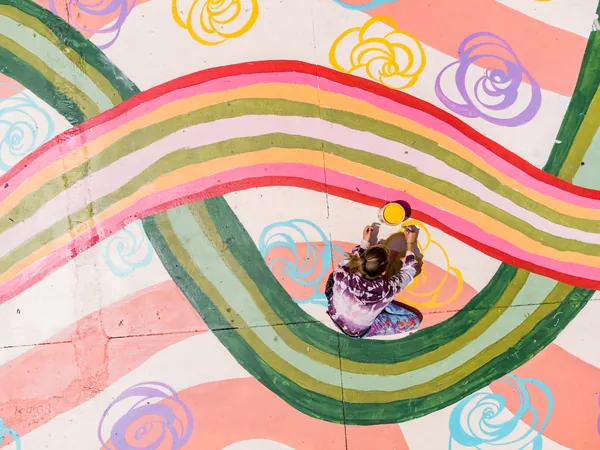
Unleashing Creativity: How the Default Mode Network is the Brain's Creative Powerhouse
2024-10-06
In the vast landscape of human cognition, an intricate network quietly influences our creative thoughts and imaginative endeavors. This fascinating system, known as the Default Mode Network (DMN), operates as a continuous stream of ideas, memories, and projections that flow seamlessly and often chaotically. The DMN, introduced to scientific discourse 22 years ago by neuroscientist Marcus E. Raichle, plays a pivotal role in shaping our creative potential—a role that is gaining more recognition with each passing study.
Groundbreaking Research on DMN and Creativity
A groundbreaking exploration into the DMN's relationship with creativity was conducted by neurosurgeon Ben Shofty and published last June in the Oxford University's "Brain." Shofty’s innovative experiment involved placing electrodes on the brains of 13 patients with epilepsy, aiming not to stimulate but to inhibit specific areas of the DMN. The results were telling: when the DMN was inhibited, patients struggled to think divergently, showing significantly less originality in their responses to creative tasks. This aligns with Shofty’s earlier findings published in *Nature*, establishing a direct link between the functioning of the DMN and creativity.
Previous Studies
This isn't just a singular observation. Previous functional magnetic resonance imaging (fMRI) studies had already highlighted a notable correlation between a person's DMN activity and their ability to concoct unique uses for mundane objects, such as a paper clip. Shofty’s experimental approach adds a new dimension by actively manipulating brain areas, showcasing a direct cause-and-effect relationship rather than mere correlation.
Gray Matter and Creativity
Adding to the conversation, researcher Simone M. Ritter discovered in 2013 that individuals with greater gray matter in DMN-related areas tend to exhibit enhanced creative abilities. Her ongoing research at Radboud University further investigates how various environments and stimuli can foster creativity, incorporating techniques such as virtual reality to help individuals tap into their DMN more effectively.
Interplay Between Networks
Further deepening our understanding, Roger Beaty uncovered that creative ideas often emerge from interactions between the DMN and two other brain networks: the salience network, which assesses stimulus significance, and the executive network, responsible for focused thought processes. This collaboration within the brain reveals a complex interplay that underpins our ability to generate innovative ideas.
The Complex Relationship
However, the relationship is not without its complexities. Some researchers approach the DMN's prominence in creativity with caution, suggesting that the field may overly simplify a multifaceted concept. John Kounios, a leading expert in cognitive neuroscience, emphasizes that the nuances of creative moments—known as "Eureka" moments—entail bursts of high-frequency brain activity that coincide with the brain filtering out distractions. Kounios' recent studies highlight that jazz musicians, for instance, enter a "creative flow" state where the richness of their experience allows ideas to flow freely, minimizing reliance on the traditional network connections.
Pathology and Creativity
Even the realm of pathology offers intriguing insights. Research has shown that patients with frontotemporal dementia often develop an intense drive for artistic expression, hinting at the brain's ability to rewire itself when faced with adversity. As Shofty illustrated, when traditional DMN pathways become impaired, creativity can migrate to more visual areas of the brain, resulting in unexpected bursts of artistic talent.
Nurturing the DMN
As we peel back the layers of this intricate neural network, it becomes increasingly clear that nurturing our DMN is vital for enhancing creativity. Experts recommend fostering a state of flow through activities that allow the mind to wander—like walking in nature or meditative practices—to unlock our full creative potential.
Implications for Learning and Problem Solving
The implications of this research may revolutionize how we understand not just creativity, but also learning and problem-solving processes in both everyday life and professional settings. So the next time you feel yourself brainstorming, remember to embrace that momentary drift in focus; it could very well lead you to your next big idea! Without the DMN, our world would be strikingly less imaginative.


 Brasil (PT)
Brasil (PT)
 Canada (EN)
Canada (EN)
 Chile (ES)
Chile (ES)
 España (ES)
España (ES)
 France (FR)
France (FR)
 Hong Kong (EN)
Hong Kong (EN)
 Italia (IT)
Italia (IT)
 日本 (JA)
日本 (JA)
 Magyarország (HU)
Magyarország (HU)
 Norge (NO)
Norge (NO)
 Polska (PL)
Polska (PL)
 Schweiz (DE)
Schweiz (DE)
 Singapore (EN)
Singapore (EN)
 Sverige (SV)
Sverige (SV)
 Suomi (FI)
Suomi (FI)
 Türkiye (TR)
Türkiye (TR)